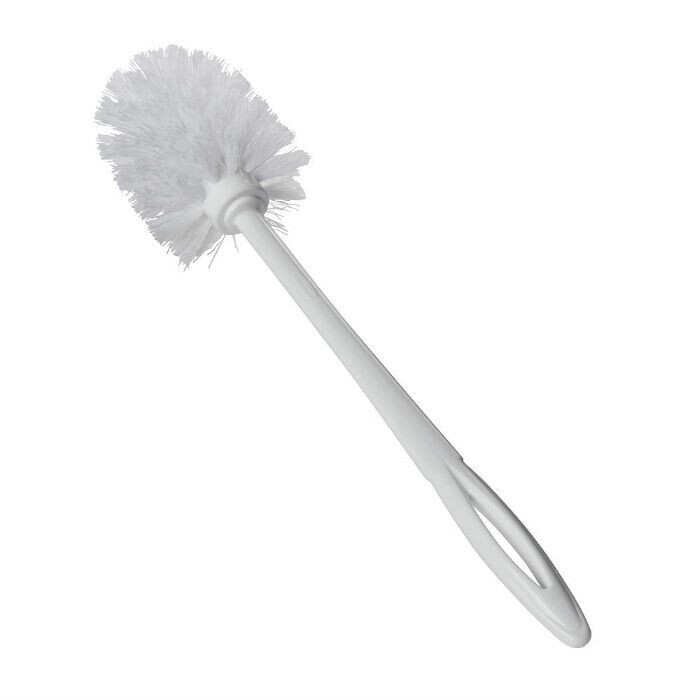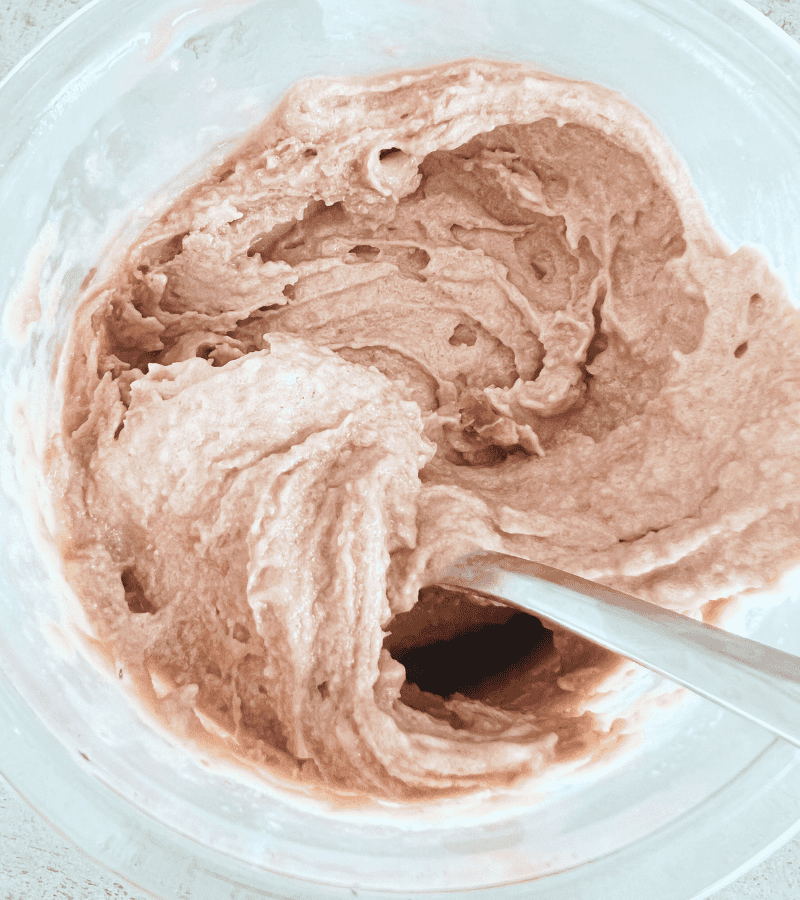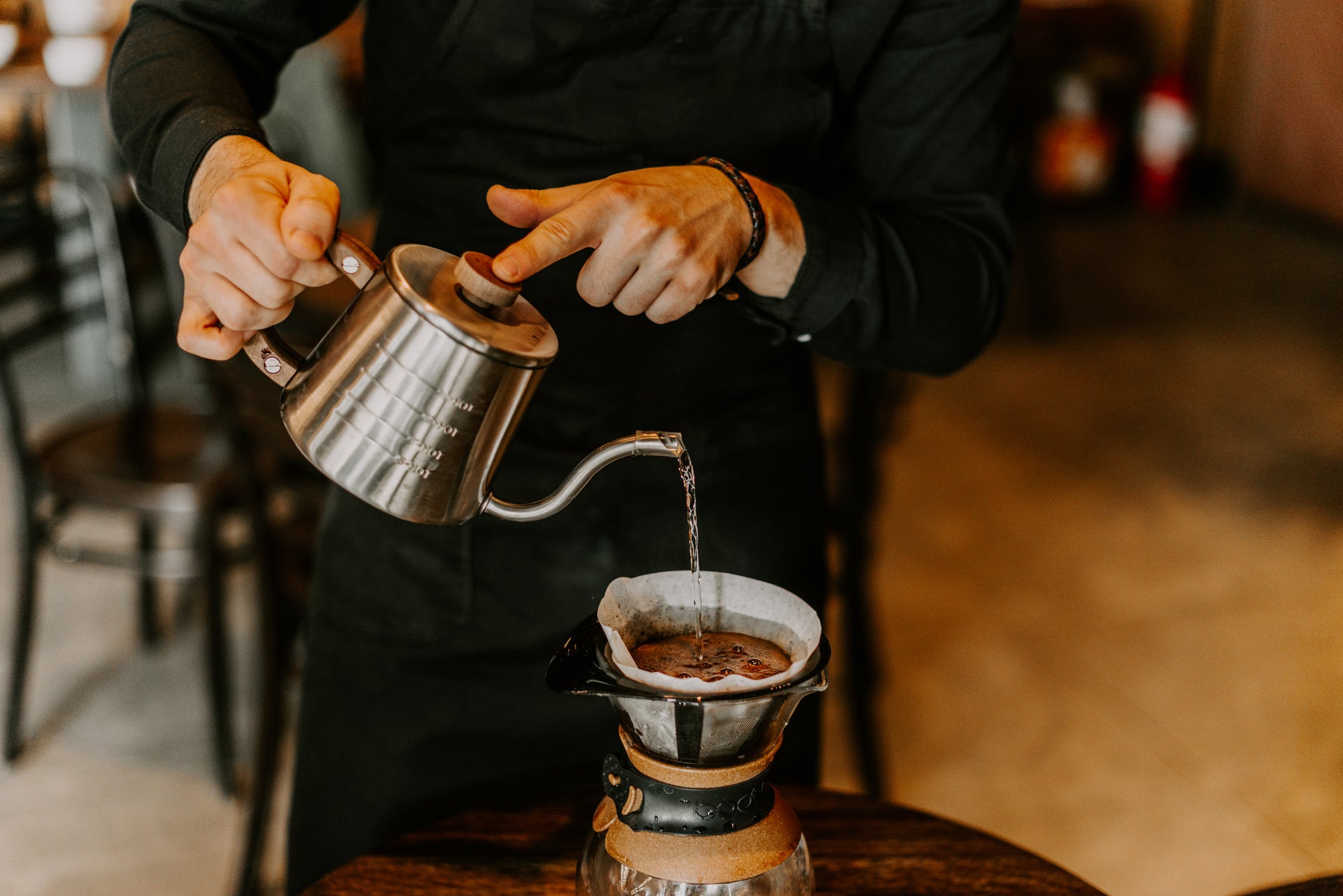
What Is The Ideal Temperature for Pour Over Coffee: A Comprehensive Gu
Price: $ 28.99
4.8(249)
When it comes to pour over coffee, temperature is key. But what's the ideal temperature for brewing the perfect cup? In this comprehensive guide, we'll explore the ins and outs of pour over coffee temperature, from the science behind it to the impact on flavor and aroma. Whether you're a coffee connoisseur or a beginner, this guide will help you achieve the perfect temperature for your pour over brew. Get ready to enjoy a delicious cup of coffee every time! The Ideal Temperature for Pour Over Coffee Pour over coffee is a popular brewing method that requires attention to detail in order to achieve the best results. One crucial factor that affects the quality of your pour over coffee is the water temperature. This section delves into the importance of water temperature and its role in creating the perfect cup.
When it comes to pour over coffee, temperature is key. But what's the ideal temperature for brewing the perfect cup? In this comprehensive guide, we'll.
When it comes to pour over coffee, temperature is key. But what's the ideal temperature for brewing the perfect cup? In this comprehensive guide, we'll explore the ins and outs of pour over coffee temperature, from the science behind it to the impact on flavor and aroma. Whether you're a coffee connoisseur or a beginner, this guide will help you achieve the perfect temperature for your pour over brew. Get ready to enjoy a delicious cup of coffee every time!
The Ideal Temperature for Pour Over Coffee
Pour over coffee is a popular brewing method that requires attention to detail in order to achieve the best results. One crucial factor that affects the quality of your pour over coffee is the water temperature. This section delves into the importance of water temperature and its role in creating the perfect cup of coffee.
Why Water Temperature Matters
The water temperature directly impacts the extraction process in pour over coffee. Using the correct temperature ensures that the desirable flavors and oils from the coffee grounds are dissolved into the water, resulting in a delicious and well-balanced brew. On the other hand, if the water temperature is too low, the coffee may taste under-extracted and weak. Conversely, if the temperature is too high, it may lead to over-extraction and a bitter taste.
Ideal Temperature Range
The optimal water temperature for pour over coffee is generally between 198°F and 205°F (92°C - 96°C). This range provides the ideal balance between proper extraction and preserving the coffee's natural flavors. To hit this temperature range, it is common practice to bring water to a boil and then let it cool for around 30 seconds before pouring it onto the coffee grounds. This typically achieves a water temperature close to 205°F.
It is advisable to use a thermometer to monitor the heat of water to ensure the desired temperature is reached. Utilizing a thermometer eliminates guesswork and guarantees consistency in your brewing process. By maintaining the optimal brew temperature, you can be confident that your pour over coffee will always taste delicious and perfectly balanced.
In conclusion, paying attention to water temperature is critical when brewing pour over coffee. A temperature range of 198°F to 205°F will yield the best results, and using a thermometer can help you achieve this range consistently. Keep this information in mind to ensure that every cup of pour over coffee you brew is full of rich flavors and aromatic notes.
Preparing the Coffee Beans and Equipment
When preparing pour over coffee, it is important to consider a few factors such as grind size, coffee beans, water quality, and brewing equipment. Getting these elements right can make a significant difference in the flavor and quality of your pour over coffee.
Choosing the Right Grind Size
To brew a perfect cup of pour over coffee, the right grind size is crucial. A consistently ground coffee is best achieved using a burr grinder, which provides more control over grind size compared to a blade grinder. For a pour over, the ideal grind size is medium-fine - not too coarse to allow water to pass through too quickly, and not too fine to cause over-extraction, which can result in a bitter taste. Adjusting the grind size based on the type of coffee beans and your personal preferences can help you achieve the perfect cup.
Selecting the Best Coffee Beans
The type and quality of coffee beans have a significant impact on the overall taste of your pour over coffee. It is essential to choose high-quality, freshly roasted beans, as they tend to provide the most flavor. Experimenting with different beans from various origins and roast levels can help you find the taste profile that best suits your preferences. Remember, even the best brewing technique cannot compensate for low-quality beans.
Importance of Fresh Water
Water quality plays an essential role in the brewing process, as it affects the extraction of flavors from the coffee grounds. Fresh and filtered water is recommended, as it can enhance the taste of your pour over coffee. Using tap water with a high mineral content can lead to a cup that tastes off or unbalanced. An electric kettle with temperature control can help you achieve the ideal water temperature, which is around 205 degrees Fahrenheit (96 degrees Celsius) for pour over coffee.
Equipment for Pour Over Brewing
Investing in the right brewing equipment can make all the difference when it comes to pour over coffee. A gooseneck kettle, which provides precise control over the flow of water, is essential for even saturation of coffee grounds. A burr grinder ensures consistent grind size, while a digital scale can help with accurate measurements of coffee grounds and water. Finally, using a pour over dripper made of materials like glass, ceramic, or stainless steel can help maintain the temperature and provide a cleaner-tasting brew.
The Pour Over Brewing Process
The pour over brewing process requires attention to detail to achieve the perfect cup of coffee. By understanding the factors affecting your brew, such as temperature, coffee-to-water ratio, pouring technique, and brew time, you can master the art of pour over coffee.
Setting the Correct Coffee-to-Water Ratio
One of the key factors in brewing a delicious cup of pour over coffee is the coffee-to-water ratio. A recommended starting point is 30 grams of coffee for 500 grams of water. This translates to a ratio between 1:16 and 1:14, or 55-65 grams of coffee per liter of water. To accurately maintain this ratio, place your brewing setup on a digital kitchen scale during the brewing process.
The Steps in Pouring Technique
Proper pouring technique plays an essential role in the extraction of flavors from the coffee grounds. Before beginning, heat fresh water to 200°F, or approximately 30 seconds away from boiling. To measure the correct amount of coffee, use 25 grams of freshly roasted coffee beans.
Begin the brewing process with a steady, slow pour in a spiral motion, wetting the coffee grounds evenly. This method ensures that the water extracts flavors from the grounds consistently for a balanced cup of coffee.
Mastering the Bloom
The bloom is a critical step in the pour over brewing process, as it allows the release of trapped CO2 from the coffee grounds. To achieve the perfect bloom, slowly pour 60 grams of water evenly over the grounds and let them sit for 45 seconds. This process should cause the coffee grounds to expand and bubble, creating a bloom that signifies the extraction of flavors.
Monitoring Brew Time
Brew time is another essential factor that affects the taste of your pour over coffee. Using a timer helps you track the brewing process and ensures that you achieve a consistent brewing time each time you make pour over coffee. A suggested brewing time is around 3-4 minutes, but this can vary based on the coarseness of the coffee grounds and your personal taste preference.
By carefully considering and implementing each of these aspects in your pour over brewing process, you can consistently achieve a well-balanced and flavorful cup of coffee. The perfect pour over coffee is a result of paying attention to the details and fine-tuning your technique to suit your preferences.
Popular Pour Over Coffee Devices
Pour over coffee has become increasingly popular among coffee enthusiasts due to its precise brewing process and the resulting exceptional flavors. In this section, we'll explore some of the popular pour over coffee devices and their features that contribute to this brewing method's success.
Chemex
The Chemex is an iconic pour over coffee maker that combines a unique hourglass design with a thick paper filter. This combination results in a clean and delicate cup of coffee. It is renowned for its ability to produce a well-balanced, smooth beverage with minimal bitterness and acidity.
The Hario V60 is a popular go-to device for pour over coffee brewing. Its conical shape and spiral ridges on the sides allow for excellent water filtration, while the single, large hole at the bottom guarantees consistent flow rate. These features facilitate an even coffee extraction and result in a flavorful, bright cup of coffee.
Kalita Wave
The Kalita Wave is another pour over coffee maker that stands out for its flat-bottomed design with three small holes on the bottom. Featuring a waved filter, this device promotes even extraction, leading to a more consistent and balanced cup of coffee. With its user-friendly design, the Kalita Wave is a great choice for those new to the pour over brewing method.
Melitta
Melitta is a brand of pour over coffee makers that has a rich history, thanks to their founder, Amalie Auguste Melitta Bentz, who invented the first paper coffee filter. Melitta pour over coffee makers often include features such as cone-shaped filters and flow control mechanisms that provide a clean, flavorful extraction. They are known for producing consistent and balanced coffee brews.
Clever Dripper
The Clever Dripper is a pour over coffee maker that combines the qualities of a pour over device with those of a French press. With its unique construction and the incorporation of a valve mechanism, it offers both immersion and drip brewing. This results in a full-bodied, well-extracted coffee, praised for its depth of flavor.
Bee House
The Bee House is a minimalist pour over coffee maker designed for an easy and efficient brewing experience. It features two holes at the bottom and typically uses standard cone-shaped filters. Bee House pour over coffee makers are known for providing a simple yet effective brewing method, resulting in a clean, satisfying cup of coffee.
Selecting Filters and Cleaning
Types of Filters and Their Effect on Taste
When brewing pour over coffee, the choice of filter plays a crucial role in the final taste of your beverage. Filters are necessary to separate the grounds from the brewing water during extraction, ensuring a clean-tasting coffee with minimal or no sediment. There are various types of filters, and selecting the right one can enhance the overall flavor of your pour over coffee.
Paper filters are one of the most popular options due to their ability to produce clean and clear coffee without any sediment. They come in a variety of shapes, sizes, and materials, depending on the pour over device that you are using. Keep in mind, quality may vary significantly among different paper filters, so it is essential to choose a reliable brand that ensures even extraction and optimal taste.
Besides paper filters, some pour over devices may require other types of filters, such as metal or cloth ones. These filters can provide a fuller-bodied coffee with a slightly richer taste, as they usually allow more oils to pass through. Your preference of coffee taste and texture will ultimately dictate the type of filter to use.
Proper Cleaning and Maintenance
Maintaining and cleaning your filters is essential to ensure optimal performance and taste. For paper filters, it's crucial to rinse them before use, which eliminates any unwanted paper taste and helps to decrease any potential barrier to water flow, ensuring an even extraction. Properly wetting the filter papers in the filter cone can significantly improve the taste of your pour over coffee.
In the case of reusable filters, such as metal or cloth ones, regular cleaning is necessary to remove any accumulated coffee residue and oils. Failure to do so may affect the flow of water during extraction and impact the final taste of your coffee. A good cleaning technique for these filters is to soak them in a mixture of distilled white vinegar and water (a 1:2 ratio) overnight. If you don't have enough time for soaking, using baking soda and a scrub brush is another effective method for removing residue.
Remember that proper cleaning and maintenance of your filter not only ensures a delicious cup of pour over coffee but also prolongs the life of your filter and brewing equipment. By selecting the right filter and keeping it clean, you'll be able to achieve the optimum taste and quality in your pour over coffee.
Comparing Pour Over to Other Brewing Methods
In the world of coffee, there are numerous brewing methods to choose from, each offering its own unique flavors and characteristics. In this section, we will explore how pour over coffee compares to other popular brewing methods such as French press, espresso, and cold brew.
Pour Over vs. French Press
Both pour over and French press methods are manual coffee-making techniques. However, there are some differences in how they extract flavors from coffee grounds. Pour over coffee uses a paper or metal filter that allows water to flow through the coffee grounds, extracting a bright and clean taste. On the other hand, French press uses a metal mesh plunger to press the coffee grounds, resulting in a full-bodied and robust flavor, while also retaining more oils and fine particles.
Water temperature plays a crucial role in pour over coffee to achieve the desired flavor profile. The ideal temperature range is between 195 to 205 degrees Fahrenheit. With French press, water temperature is less critical but still should be within the same temperature range to achieve optimal extraction.
Pour Over vs. Espresso
Espresso is a coffee brewing method that uses high pressure to force hot water through finely-ground coffee. This results in a concentrated, strong, and rich shot of coffee. In contrast, pour over coffee relies on gravity to pass hot water through the coffee grounds, producing a lighter and smoother cup of coffee.
Temperature control is important in both methods: for espresso, the water temperature should be around 190 to 204 degrees Fahrenheit, while pour over requires a slightly broader temperature range of 195 to 205 degrees Fahrenheit. Espresso machines typically have built-in temperature controls, making it easier to achieve consistent results.
Pour Over vs. Cold Brew
Cold brew coffee is a method that involves steeping coarse coffee grounds in cold water for an extended period of time, usually overnight or for up to 24 hours. This produces a smooth, less acidic, and less bitter coffee concentrate that can be diluted with water, ice, or milk to taste. Unlike pour over and other hot brewing methods, there is no need to worry about water temperature with cold brew.
While pour over coffee is brighter and nuanced in flavor, cold brew is known for its smooth and balanced profile, making it an ideal choice for those who prefer a milder coffee taste. It's worth noting that due to the long brewing process, cold brew requires more coffee grounds than pour over, which can be a factor to consider when choosing between the two methods.
Enhancing Pour Over Coffee Flavor Profiles
To enhance the flavor profiles of your pour over coffee, understanding the impact of temperature, grind size, brew time, and roast levels on extraction is crucial. Each parameter plays a significant role in bringing out the desired flavors from ground coffee. In this section, we will explore how to adjust grind size and brew time, as well as experimenting with roast levels and beans to improve the overall pour over coffee experience.
Adjusting Grind Size and Brew Time
When brewing pour over coffee, the grind size impacts the extraction process. A coarser grind allows the water to pass through the coffee grounds more quickly, leading to under-extraction and weak flavors. On the other hand, a finer grind causes water to move slowly, resulting in over-extraction and increased bitterness. Therefore, it is essential to find a balanced grind size that promotes even extraction and achieves the desired flavor profile.
To optimize pour over coffee brewing, follow this step-by-step guide:
Start with a medium grind size and adjust accordingly based on flavor results.
Ensure that the water temperature is approximately 205°F (96°C) or 30 seconds off the boil.
Using a goose-neck kettle, pour water over the ground coffee in a circular motion to ensure even saturation.
Pay attention to brew time: aim for a total brew time of about 3-4 minutes, adjusting the grind size if necessary.
Consistently monitoring and adjusting the grind size and brew time will help to achieve the perfect extraction and desired flavors in your pour over coffee.
Experimenting with Roast Levels and Beans
Another crucial aspect of pour over coffee flavor profiles is the choice of coffee beans and their roast levels. Different beans exhibit unique characteristics, and the roast level can accentuate specific flavors while diminishing others. Light roasts generally bring out bright acidity and fruity notes, while dark roasts show more robust, smoky flavors. Experimenting with a variety of beans, roast levels, and even origins can play a significant role in enhancing your pour over coffee experience.
When exploring various roast levels and beans, consider these tips:
Lower water temperature (around 200°F or 93°C) for lighter roasts to emphasize fruity, acidic notes.
Higher water temperature (between 205-210°F or 96-99°C) for darker roasts to extract bolder, smoky flavors.
Try single origin beans to experience the unique flavors of each region.
Experiment with coffee blends to discover combinations that suit your taste buds best.
Personalizing your pour over coffee experience with customized grind size, water temperature, brew time, and the choice of beans and roast levels will help you achieve a rich, complex, and satisfying flavor profile that you enjoy in each cup.
Conclusion
In conclusion, the temperature of the water used for pour over coffee plays a crucial role in extracting the best flavor from the coffee grounds. The ideal water temperature for pour over coffee lies between 195 to 205 degrees Fahrenheit. Within this range, the water can effectively extract the desirable compounds from the coffee without over-extracting or under-extracting, resulting in a well-balanced and flavorful cup.
To achieve this optimal temperature without a thermometer, one can bring the water to a boil and let it sit for approximately 30 seconds to a minute before pouring. Maintaining a consistent water temperature throughout the brewing process will ensure a more enjoyable coffee experience.
While the focus of this article has been on water temperature, it's crucial not to forget other essential elements such as the coffee-to-water ratio, brew time, and grind size. A recommended starting point for pour over coffee is a ratio of 55-65 grams of coffee per liter of water (approximately 1:16 to 1:14 mass ratio). Using a digital scale to weigh the coffee and water can help maintain accurate ratios.
Finally, having the proper equipment, such as a temperature-controlled kettle, a quality pour over dripper, and fresh coffee beans, can also contribute to brewing the perfect cup of pour over coffee. Experimenting with different variables and taking note of personal preferences will ultimately help you find the right balance to suit your taste buds.

Guide To Pour-Over Coffee – Counter Culture Coffee
The Perfect Pour Over Guide – Coffee Bros.
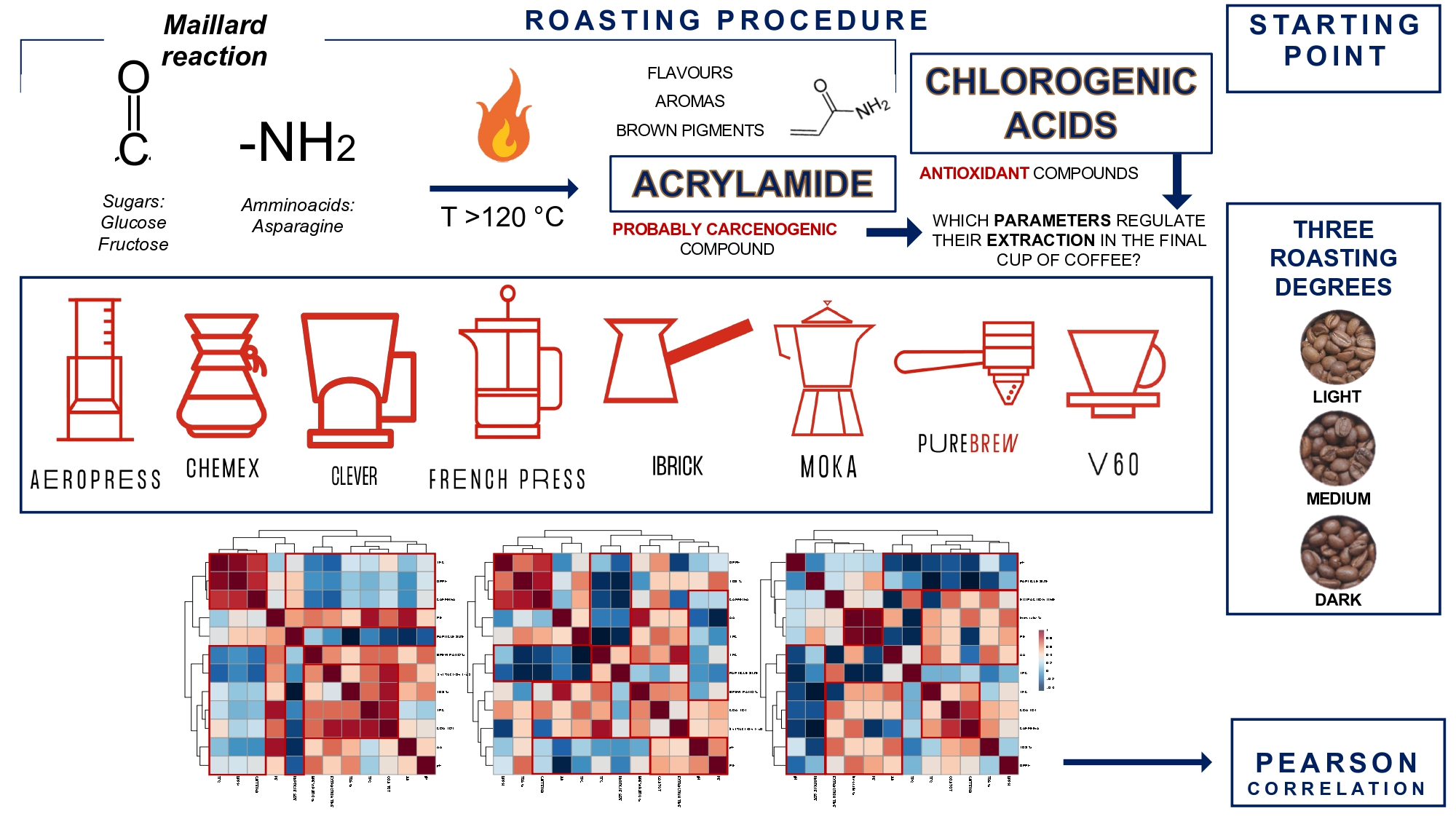
Antioxidants, Free Full-Text
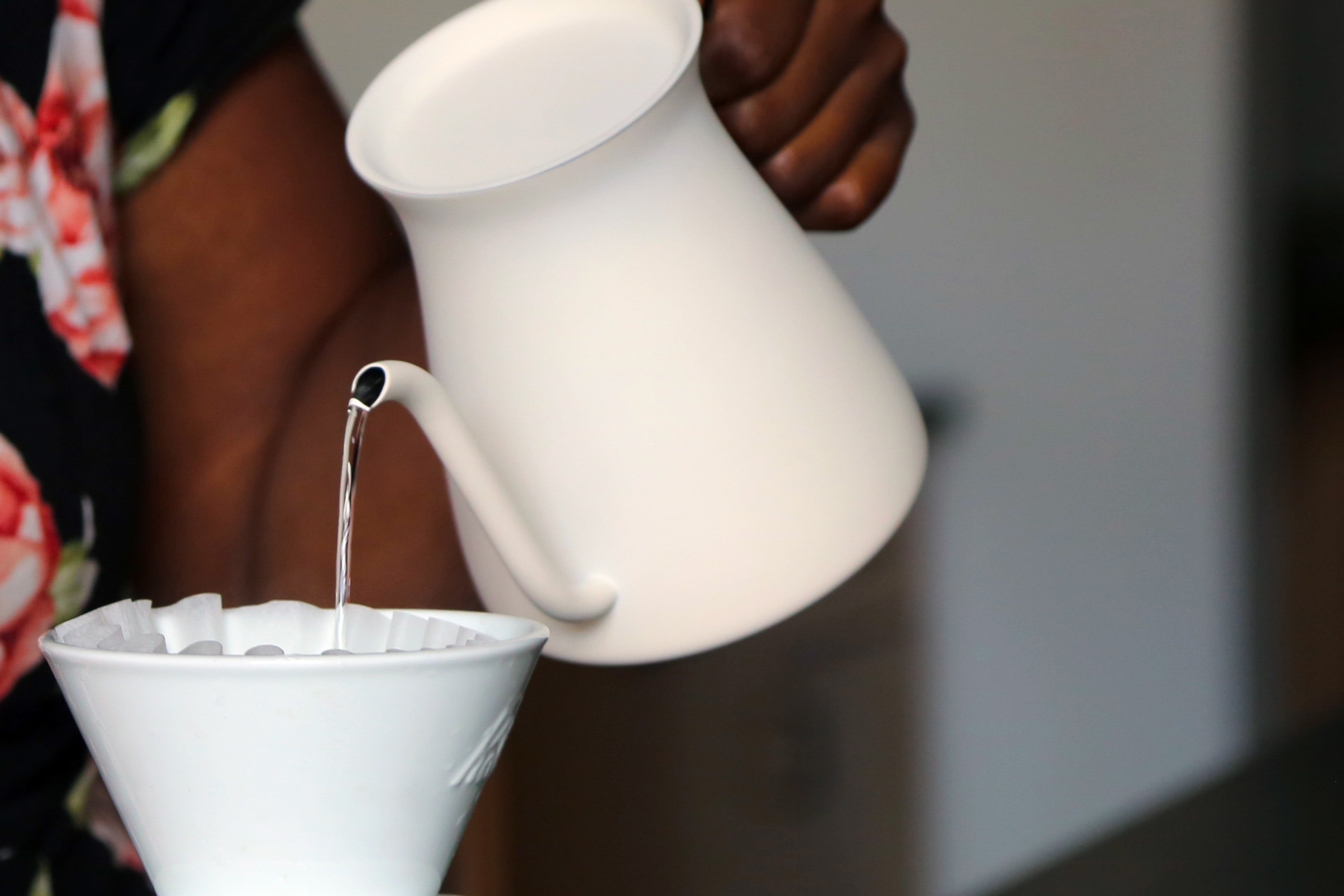
Guide To Pour-Over Coffee – Counter Culture Coffee
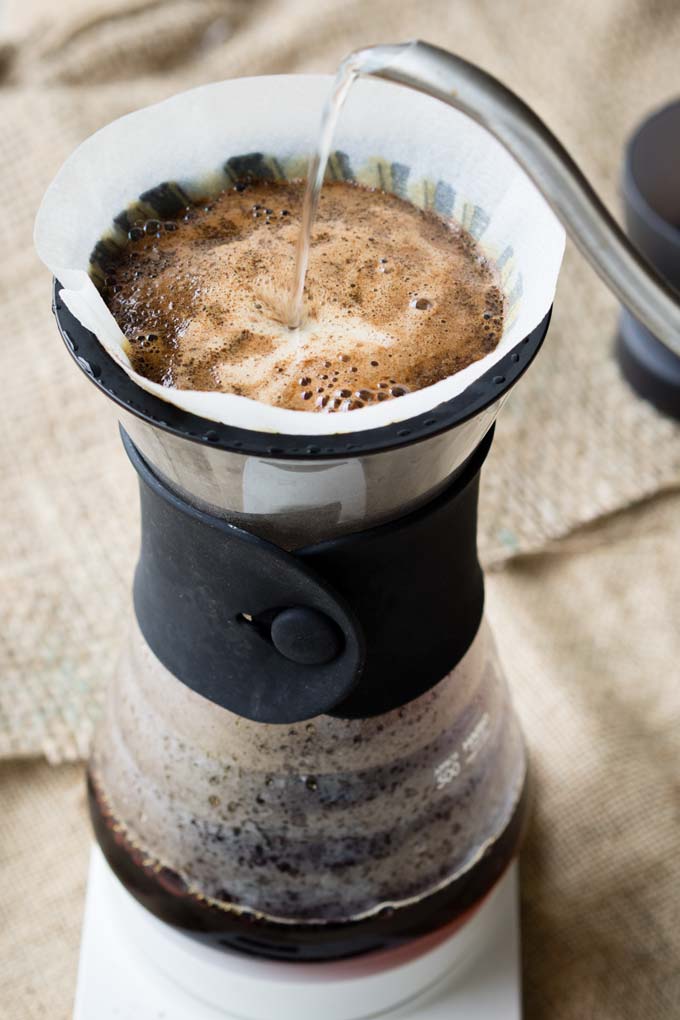
How to Make Pour Over Coffee - Brew Guide
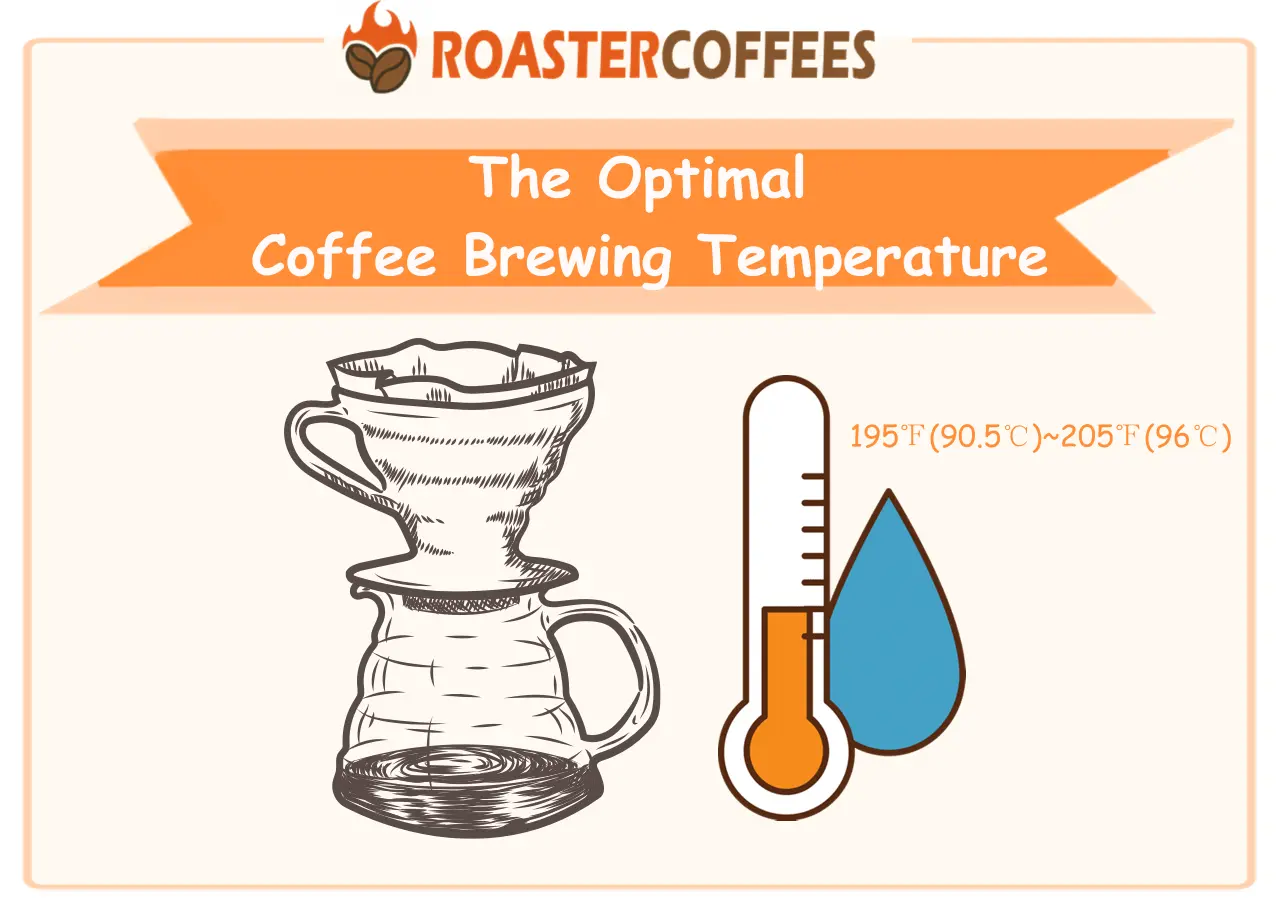
The Optimal Coffee Brewing Temperature - ROASTER COFFEES
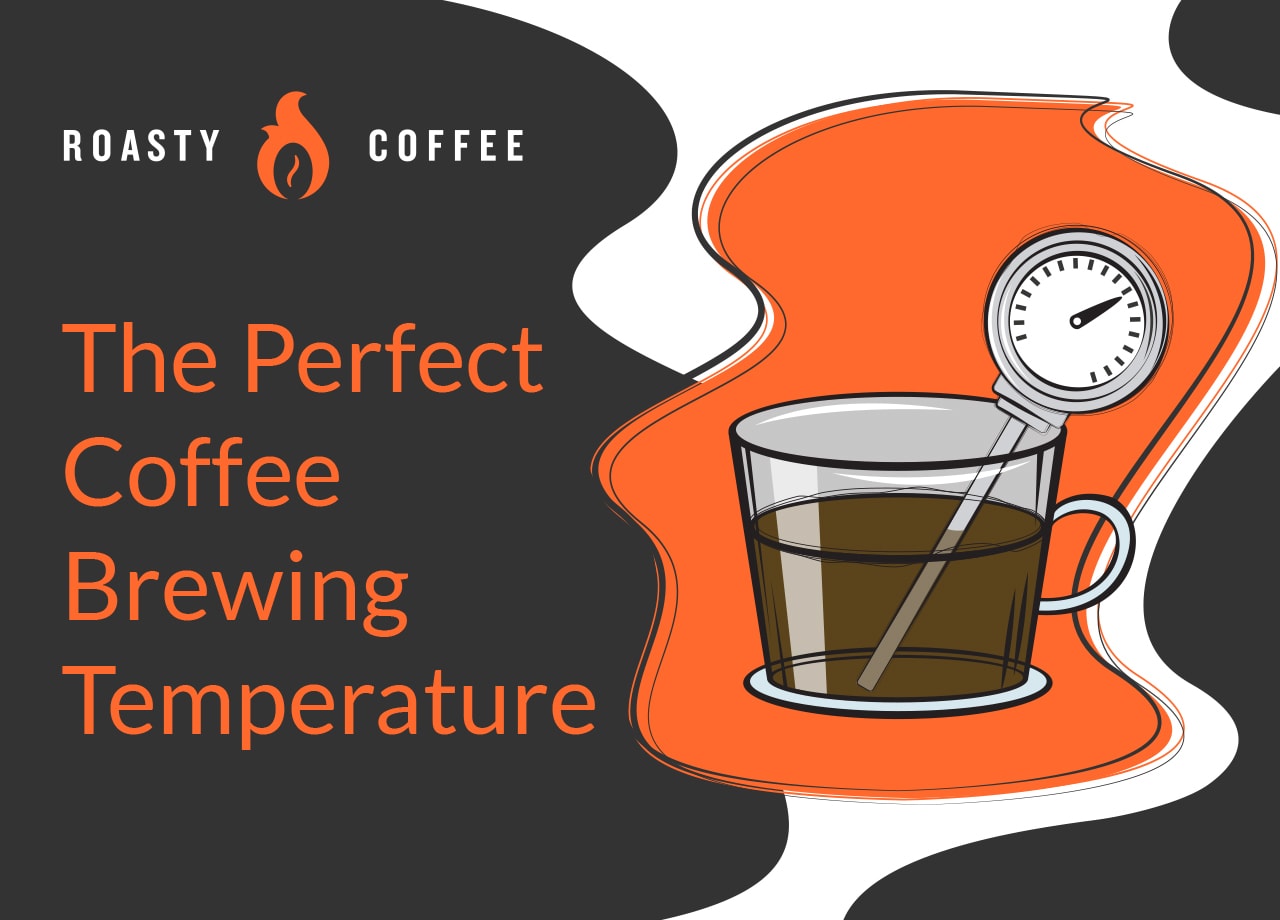
The Perfect Coffee Brewing Temperature
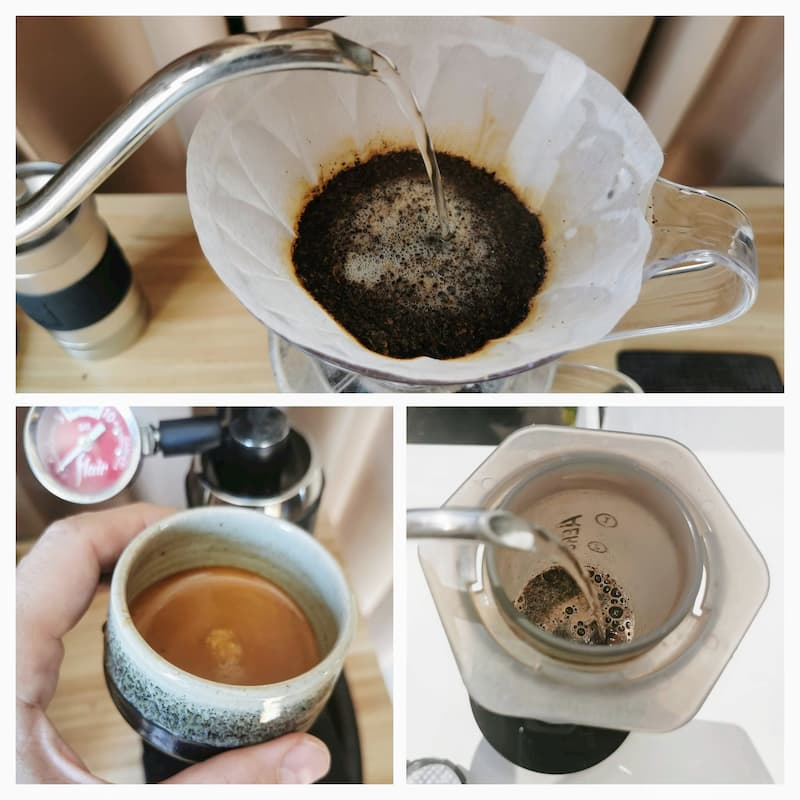
The Best Temperature to Brew Coffee

The Only Pour Over Coffee Recipe You'll Ever Need In Life

What Is The Ideal Temperature for Pour Over Coffee: A Comprehensive Gu

The Ultimate Guide To Brewing The Perfect Pour Over Coffee

The Ultimate Guide To Brewing The Perfect Pour Over Coffee
